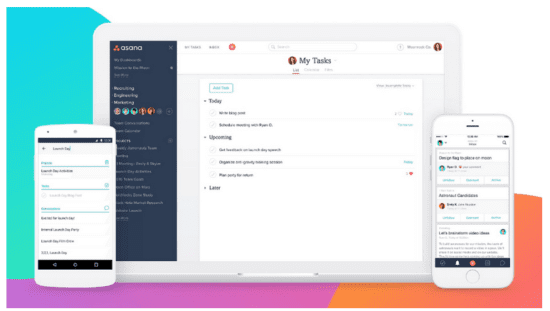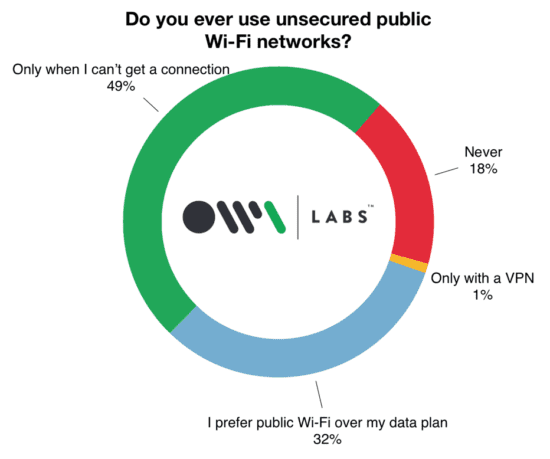How can you keep remote teams productive, connected and safe?
Nearly a quarter of the nation’s skilled professionals perform remote work, according to the 2018 BLS American Time Use Survey Summary. Over the last decade, technology has transformed the workplace and facilitated even more remote work. More business leaders are building and managing remote teams to incentivize the best available talent while still increase productivity and team communication.
While many may assume developers are some of the team members most likely to work from home, the truth is that all types of skills are working from home. In fact, workers with an advanced degree are more likely to work from home, according to the study. As the world’s pool of skilled talent shrinks, nearly half of all professionals perform some work from home.
Download our Business Resource – Digital marketing team structure
The aim of this template is for you can compare these structures to your current situation to help plan future changes.
Access the Digital marketing team structure
Additionally, the job marketplace is growing increasingly intense. As a result, more enterprises are offering remote work as a job perk or as a means to access geographically dispersed talent. As business leaders look for ways to cut costs and secure expertise, the use of remote teams is on the rise. Across nearly every industry, a significant segment of professionals now telecommute to work.
While telecommuting is proving to be as much a benefit for employers as it is for employees, managing a remote team can present unique challenges. Savvy business leaders can leverage the following five tips to build highly effective remote teams.
1. Find team members with self-sufficiency
It’s essential that your remote employees can work independently. When hiring for a remote team ask questions about a time that they had to work independently to reach a goal. Remote employees who are passionate about their work are more likely to perform optimally. It can be difficult to judge a candidate’s self-sufficiency solely by weighing their optimism during telephone interviews. Fortunately, several tests have come up to help managers identify this trait.
For example, remote managers are using tools such as the Psychology Today online Career Motivation Test. The 15-minute test includes 102 questions that uncover skills like independence, communication strengths, and self-motivation. Alternatively, you can assess remote job candidates using the Minnesota Multiphase Personality Inventory (MMPI).
Even after hiring a self-sufficient employee, it is important to continue to train them to be independent. Provide help and guidance, but also don’t be afraid to ask them to figure out their own questions through trial-and-error. By emphasizing that you trust their judgement, you can build a culture of independent, remote, problem-solvers.
2. Pick a common language and manage time differences
Remote technology enables you to access highly skilled professionals from all over the world. However, differences in language, spoken and developing languages, can cause confusion or even errors. Clearly define which language the team will use to communicate and also the language that the developers will be using to code. Depending on the business, it is often helpful to even define which measuring system you will be using.
Additionally, even will a fully remote team you’ll need to teleconference or video-conference with teams to hammer out complex issues. If remote candidates live on opposite sides of the globe, or even more than eight hours apart, it can be challenging to find a time that works for everyone.
In order to ensure communication can occur, block off meeting time for all team members a few times a week. Having a set meeting time will reduce the time it takes to set up a meeting and facilitate more communication. Although the meeting will be early for some team members and late for others, having it be a regular standing meeting time will set expectations to be ready and available then.
In addition to having set meeting times, it can be important to have set working times. Encourage team members to block off white-space, or time when they will not be reachable. This will set the proper expectations for when someone can be reached and when a team member can expect a response.
3. Productivity tools
Remote positions place workers further apart compared to traditional office settings. When working remotely it is easy for the job to feel like a series of random, small tasks, rather than seeing the larger picture. However, innovative apps can support effective communication between remote workers and help employees understand the bigger picture behind their work.

Cloud-based services help remote workers complete projects on time and within budget. Tools such as Asana, Harvest and Slack support communication across laptops, smartphones and tablets. For example, using project management software like Asana, team leads can assign tasks to each member and give each task a priority. The software displays the necessary tasks and also shows the overall project status and the timeline for the entire project
Complimenting project management software with time tracking can even further provide clarity and encourage productivity. While time-tracking is notoriously a pain in the neck for many employees, software like Harvest, makes time tracking automatic and easy. By assigning every task in Asana, and then time tracking in Harvest, the manager can see how long each part of a project is taking and better forecast when they are ahead, or behind schedule. It can also help display this information to team members and foster more informed communication.
Rather than bugging a co-worker, they can see where a project is currently sitting and who holds responsibility. It also becomes more visible when a remote resource is taking too long and slowing down the team. Providing time estimates and then displaying what teams meet those deadlines will encourage remote workers to stay on track or request more time.
While these tools can help get work done faster, they can also facilitate team building and company culture. Encouraging communication about both work and personal life can get employees more invested in the organization. For example, a remote co-worker can set up fun channels on Slack to share jokes or even talk about their favourite TV shows. Having an outlet to talk about similar interest outside of work can bring people closer - even when they live far away - and help them communicate better on their projects.
4. Enforce data security
Unlike a traditional office setting, where all machines are in the same location and supported by a local IT department, it can be difficult to monitor the security of data with remote teams, largely due to the different devices and different set-ups. Remote workers often use their own devices including a laptop, desktop, smartphone and tablet. These many devices may also be travelling as the employee may work from home, or a coffee shop, or even when travelling through airports, train stations, or hotels.
Largely because of this, remote teams are especially vulnerable to cyber attacks, according to the security firm SiteLock. A survey conducted by One World Identity (OWI) Labs reveals that 81% of people connect to free public Wi-Fi, despite understanding the risks. The OWI survey revealed that most users prefer to use free Wi-Fi rather than their pay data, especially if they can establish a connection. Even if just a single member of your team connects to a bad Wi-Fi spot, your entire network and data could be accessed by a hacker. Without the proper security technology and data policies, the work of the entire team could be in jeopardy.

To promote data security, remote workers should always use a mobile VPN service to secure your mobile data over public Wi-Fi. Premium VPN vendors update their software regularly to encrypt data passing over unsecured networks. Additionally, the organizations should have a strong password policy to ensure passwords are challenging and changed often. Finally, teams should investigate cloud solutions that can keep data up-to-date and secure,
5. Career development
A Gallup report reveals that millennials are especially ambitious compared to previous generations. The survey states that respondents view jobs as opportunities for growth. Unfortunately, a considerable amount of surveyed millennials don’t feel that employers give them enough access to learning opportunities. Remote workers often feel this even more acutely.
The lack of in-office face time and fewer in-person networking opportunities may make remote workers less aware of the opportunities within the organization. Yet, career development is important to remote workers and they often may be some of the most qualified for positions at a company.
The Gallup report, titled How Millennials Want to Work and Live, states that 87% of respondents believe that career development is important to them in a job. You can help support career development for remote teams by building policies that pay for additional education or even smaller pieces of training like online classes or seminars. Consider providing "free work time" where employees can work on personal projects during the work week. While these programs do cost money and time, employees will bring these new skills to their work and also feel more committed to the company, thus, reducing turnover.
Working toward a common goal
Even though you're building a remote team, it's still essential to develop a palpable, unified company culture. However, this is a challenge for remote team leaders. Promote an atmosphere of cohesion by hosting daily meetings at times that work for everyone. Facilitate communication and task management through online tools.
Also, you can explore alternative organizational structures that allow workers to take on more responsibility. Today’s professionals want opportunities for growth so you can boost employee loyalty and morale by offering free online learning resources.
Building a robust remote team starts at the hiring stage. Once you choose your new hires, you must instil your company values and corporate culture in your remote staff members.
Furthermore, you must take steps to nurture an inclusive work experience. It’s easy to unintentionally overlook the needs of workers who you don’t see every day. Despite your team’s remote location, they should feel as though they have equal accountability, responsibility and opportunities.
Matt Shealy is the President of ChamberofCommerce.com. Chamber specializes in helping small businesses grow their business on the web while facilitating the connectivity between local businesses and more than 7,000
Chambers of Commerce worldwide.









